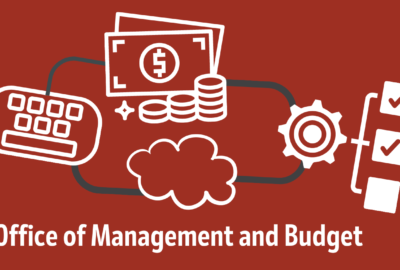US Mint facing its future without copper wires
Jason Mervyn, a lead IT specialist for the US Mint at West Point, said the agency is figuring out how back end operational technology systems can continue to ru...
Key back-end systems at the U.S. Mint are in danger of being cut off from the outside world.
These are systems that run elevators, fire alarms and the like that have lived on copper wire telephone wires for much of the past 75 years and can’t easily be adapted to modern IP infrastructure.
Jason Mervyn, a lead IT specialist for the U.S. Mint at West Point, said these systems are now at risk at the Mint, and really at many other agencies.
“One of the most important directives I have is to make sure things stay up. You don’t want to suddenly not get dial tone, and in keeping with that, we have to make sure that the Mint has the best redundancy and stability and the ability to continue operations as possible,” Mervyn said on Ask the CIO. “It’s sad to say that the tier one companies, which are the big the big telephone companies, the ones people are most familiar with like AT&T and Verizon, are simply not making the offer of supporting copper any longer. It’s because the technology has moved on sufficiently and they don’t want to have to support the copper either. So having seen, unfortunately, now my fair share of dusty telephone cabinets, you can realize why they don’t have the ability and they don’t want to keep people trained on obsolete skills. It’s only the old bear in the woods kind of people who have the skills any longer.”
For the Mint and other agencies, the challenges isn’t just that the big telecommunications companies don’t want to support copper wires, but as more and more of the infrastructure moves to internet protocol (IP)-based technologies and become interconnected, the cyber risks increase significantly for back end systems that traditionally have been isolated.
These systems include those for fire alarms, elevators, Supervisory Control and Data Acquisition (SCADA) systems and similar ones.
Disconnect notices coming soon
Don Parente, the vice president of federal sales and solution architecture at MetTel, said the upgrades that are needed aren’t a singular challenge.
“When you start looking at the copper going away, you might have voice lines that could be replaced with IP telephony or IP handsets, and move to a hosted IP based telecommunications platform. You might have these specialty lines that require these types of transformation capabilities where it still looks like [plain old telephone systems (POTS)] for the panel, but it looks like IP to the network. Then it’s taking it up a notch where you have the more traditional private branch exchanges (PBX) that exist inside of an agency and those are often served with larger trunks that are delivered over copper.”
Additionally, he said the Federal Communication Commission recently gave local exchange carriers permission to shut down copper wires, which is something they have been wanting to do for some time.
“That green light is accelerating disconnect notices to government agencies and others,” Parente said. “The move to voice over IP and IP in general is a more efficient protocol to route calls or telecommunications across the network. There is a need to modernize and evolve, which is part of what is driving this change. A lot of people are disconnecting their home phones and the need and use of plain old telephone systems has reduced and there is still a large infrastructure that carriers don’t want to maintain.”
The Mint is looking at how to modernize without having a huge budget increase.
Mervyn said he’s working to figure out alternative sources for unique items like emergency POTS lines, which traditionally are powered by the phone company’s central office and therefore remain powered even when the site loses electricity.
“A friend in the commercial sector indicated he has had to award site-by-site contracts with local equipment carriers for his remaining essential POTS connections, and depending upon each of our seven locations’ needs, I may have to go that route,” Mervyn said.
Costs are rising for copper wires
Parente said modernization becomes more imperative because carriers are increasing the price of providing and supporting POTS and other legacy technology.
He said he’s seen costs rise to as much as $1,000 a month and the likelihood of the price going higher is real.
“If you have a fire alarm panel in a building and it works just fine, you don’t have to replace the entire alarm system because POTS is going away. You need to come up with a way to serve the system from a network IP perspective. You can retrofit what exists,” he said. “There are solutions out there. But you have to get to it before it’s too late. We get calls from agencies or companies saying they have received a disconnect notice. The key here is to plan and get ahead of it. I think IT professionals know it’s coming as do those in charge of alarm systems or elevators, but there are plenty of folks who need to learn it’s coming and start planning ahead.”
Mervyn said like with most IT system upgrades, agencies need to start by knowing what they have today and what needs to change.
He said a few years into this effort, the Mint still is trying to close out lines that are almost like “ghost accounts” with multiple entries in the billing system from the General Services Administration.
“The lines have been shut for maybe five years, but the billing still occurs. So make sure you know how to decommission those lines and do so when you stopped using them,” he said. “The flip side of that is make sure you have the carriers do what’s called a customer service record (CSR), which is the way that you get what they say your inventory is, rather than just thinking you know what it is. So having that list of things that they’re charging you for helps match up with what you’re going to wind up closing on the back end.”
Copyright © 2024 Federal News Network. All rights reserved. This website is not intended for users located within the European Economic Area.
Jason Miller is executive editor of Federal News Network and directs news coverage on the people, policy and programs of the federal government.
Follow @jmillerWFED







